Do I Need to Deadhead Geraniums? Tips for Healthier Blooms
Have you ever wondered if you need to deadhead your geraniums to keep them blooming beautifully? Deadheading is a simple process of removing the old, fading flowers from the plant. Doing this helps your geraniums produce new blooms more efficiently, which means more color and life in your garden or pots.
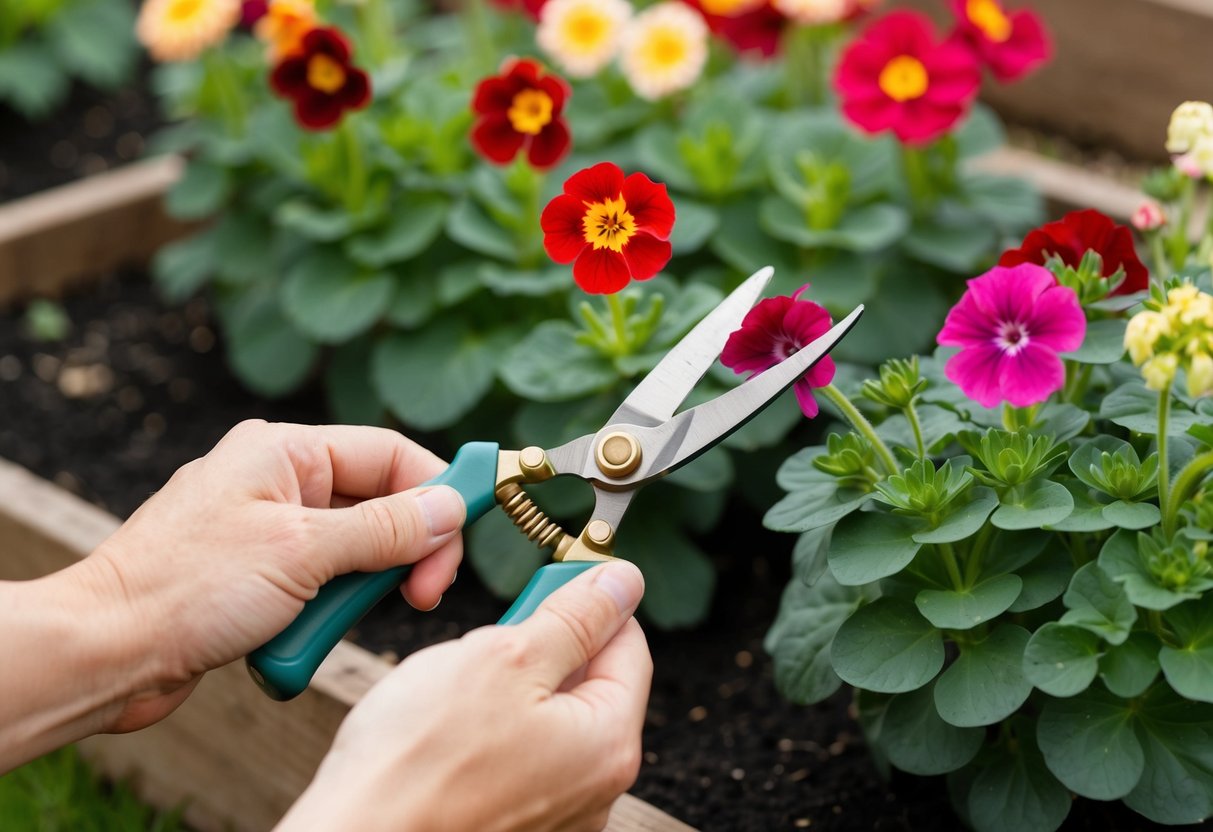
Geraniums are popular for their vibrant colors and long blooming season. To make the most out of them, a bit of maintenance goes a long way. Removing wilted flowers not only keeps the plant looking fresh but also encourages it to direct energy toward producing more blooms instead of seeds.
If you choose to deadhead your geraniums, you may notice a boost in their blooming performance. Whether you’re using your fingers or a pair of scissors, it only takes a few moments to make a big difference in their appearance. So, why not give your geraniums the care they need to thrive all season long?
The Importance of Deadheading Geraniums
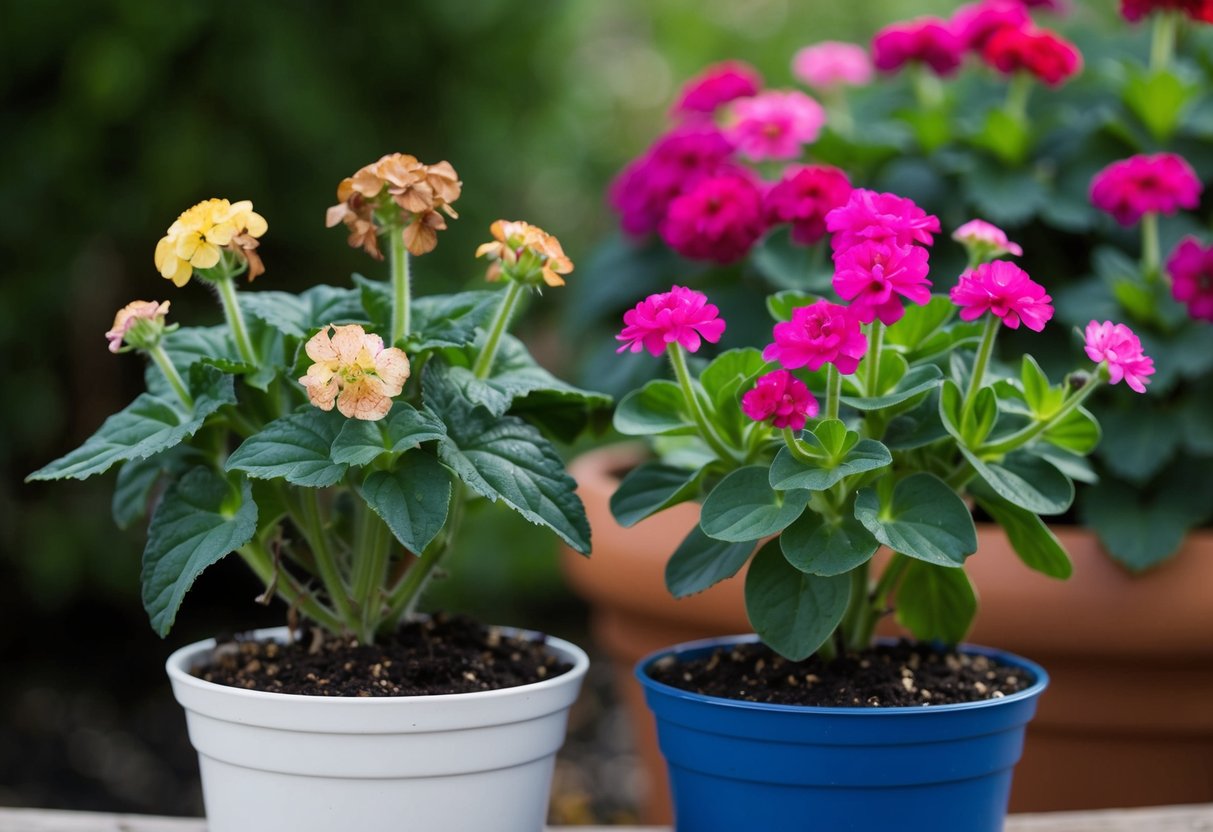
Deadheading geraniums is a great way to keep your garden looking fresh and vibrant. It can help boost new growth, extend the time you enjoy blooms, and keep your plants healthy.
Stimulating New Growth
By deadheading geraniums, you’re encouraging the plant to focus on producing new flowers. When you remove faded blooms, the plant redirects its energy to stimulate new growth instead of creating seeds. This helps the geraniums to stay lush and full.
Regularly removing dead blooms lets your plant concentrate on vigorous growth. You’ll notice that your geraniums will be more likely to develop healthy new stems and leaves. This regular maintenance is an easy way to ensure ongoing vitality in your garden.
Extending Bloom Time
Deadheading can extend the bloom time of your geraniums significantly. When you remove spent flowers, you prevent the plant from entering a seed-production phase. This keeps it in bloom longer, offering continuous color.
For the best results, check your plants weekly and snip off any faded flowers. This simple task ensures more prolific flower production and extends the flowering period. Enjoy vibrant blooms throughout the growing season by keeping up with this routine.
Maintaining Plant Health
Maintaining plant health is another benefit of deadheading geraniums. By removing dead or wilted blooms, you reduce the risk of diseases and pests that can harm your plants. This helps the plant’s energy focus on creating healthy stems and new blossoms.
When you deadhead, you allow for better air circulation around the plant. Clear away debris to prevent mold or mildew from forming. This helps ensure that your geraniums remain strong and disease-free, keeping your garden beautiful and thriving.
When to Deadhead Geraniums
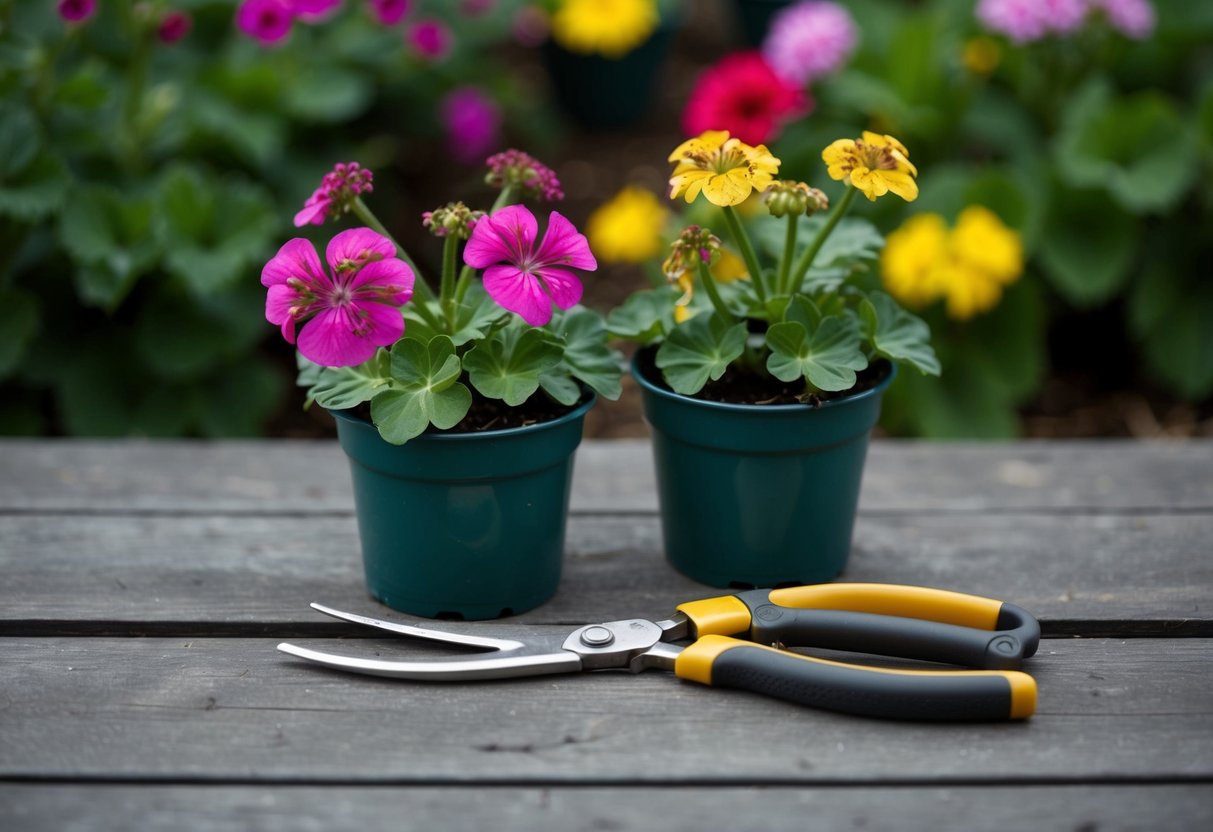
Deadheading geraniums is essential for keeping them blooming beautifully. Knowing when to remove spent blooms, considering the blooming season, and adapting to weather changes can help your geraniums stay vibrant all year long.
Identifying Spent Blooms
Identifying spent blooms is the first step in deadheading your geraniums. Look for flowers that are wilting or turning brown. These are the blooms you need to remove. You can use your fingers or small tools to gently pluck them off. By getting rid of these faded flowers, you enable new ones to grow. This keeps your plant looking lush and encourages constant blooming.
Healthy geraniums tend to have bright and perky flowers. So, if you notice any that look weak or droopy, it’s time to act. Keeping an eye on your plants regularly will help you spot these changes early. This allows you to deadhead at the right moment, ensuring continuous blooms.
Seasonal Timing for Deadheading
The best time to deadhead is during the blooming season. For geraniums, this is typically throughout the spring and summer months. During these seasons, flowers grow and fade at a quicker pace. Regular checks every couple of weeks will keep your plants neat and flowering well.
Geraniums can sometimes continue blooming into early fall. Keep deadheading these late bloomers so they maintain their vigor. If your geraniums are perennials, they might have a dormant period. During this time, deadheading is less necessary, as the plants conserve energy for new growth in the following season.
Weather Considerations
Weather can affect when and how you deadhead your geraniums. In hot and dry conditions, flowers may fade more quickly. Similarly, if it’s been raining a lot, wet conditions can lead to blooms wilting faster. You’ll want to deadhead more frequently in such weather to prevent rot and keep your plants healthy.
Windy conditions can also cause flowers to become damaged or dislodged. After a windstorm, it’s a good idea to check your geraniums for any blooms that need removal. Being attentive to these weather changes will ensure your geraniums remain healthy and vibrant throughout their blooming period.
How to Deadhead Geraniums

Deadheading geraniums helps maintain their vibrant blooms. This involves removing faded or dead flowers to promote new growth. Here’s a guide on selecting the right tools, carrying out the process, and disposing of the spent flowers properly.
Choosing the Right Tools
To successfully deadhead geraniums, you need appropriate tools. Clean, sharp scissors or pruners are ideal for precise cuts. Gardening gloves can protect your hands while working. For larger geraniums, secateurs might be handy, ensuring a clean and efficient cut.
Keep your tools in good shape by sharpening them regularly. This prevents unnecessary damage to the plant. Additionally, sanitized tools help prevent the spread of any diseases. Proper tools make the process smoother and more effective.
Step-by-Step Deadheading Technique
Begin by identifying flowers ready for removal. Look for those turning brown or appearing tattered. Grasp the flower stalk just above where it meets the main stem. Cut slightly below this point, where the individual blossoms gather in a cluster.
For ease, use your thumb and forefinger if no tools are available. Do this weekly to encourage continuous blooming. Regular attention keeps your plants looking fresh and healthy, and saves you time from lengthy sessions later.
Disposal of Spent Flowers
After removing the dead flowers, consider eco-friendly disposal. Composting the spent flowers is an excellent choice. It enriches your soil and reduces garden waste. If you don’t compost, placing them in a garden waste bin works too.
Avoid leaving the removed parts on the ground. They can attract pests. By properly disposing of them, you maintain garden hygiene. This simple practice prevents potential diseases and keeps your garden tidy.
Different Types of Geraniums and Deadheading
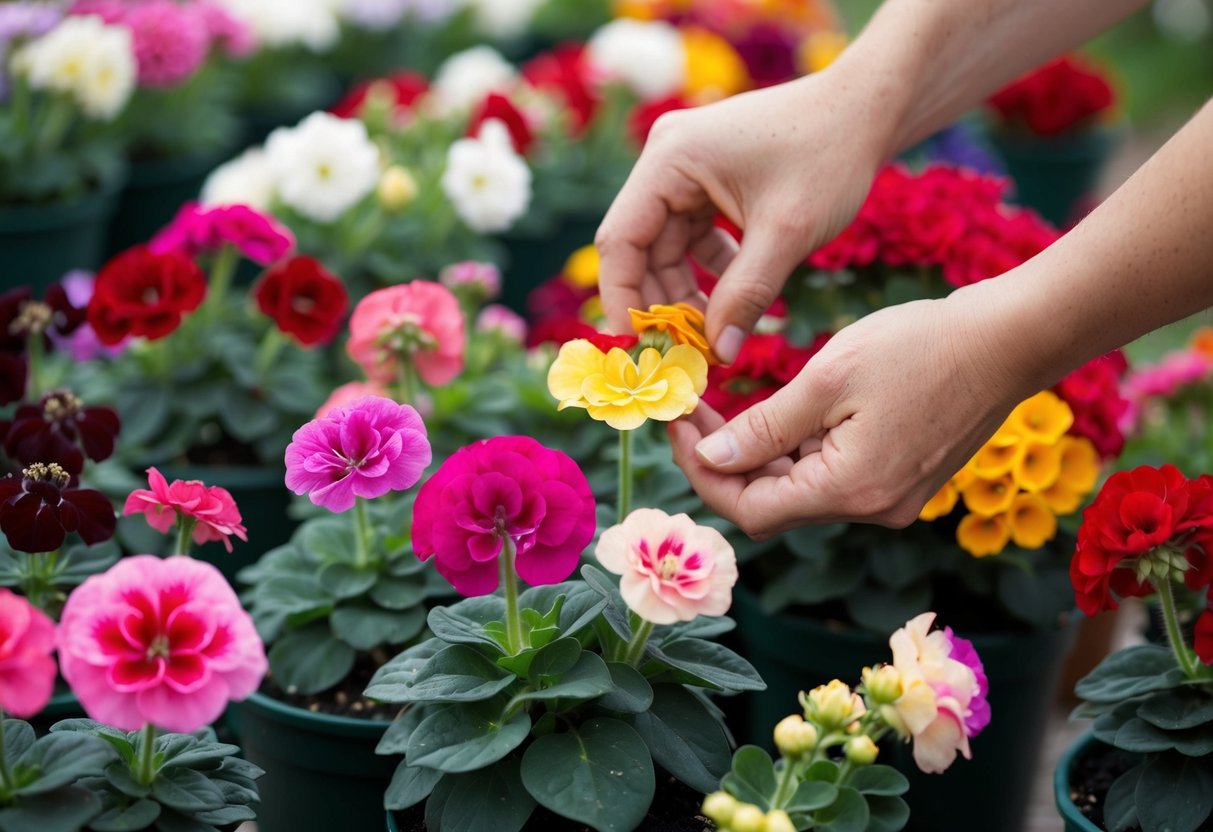
Understanding the different types of geraniums can help you know how and when to deadhead them. While some species like zonal geraniums can benefit greatly from this process, others may not require as much attention.
Annual vs Perennial Geraniums
Annual geraniums, often called pelargoniums, are popular in garden pots and containers. These bright bloomers benefit the most from deadheading. By removing the faded flowers, you encourage more growth, keeping your garden colorful all season long.
Perennial geraniums, such as cranesbills, typically don’t require as much deadheading. These hardy plants continue to blossom even if you skip cutting back spent flowers. Although trimming can help maintain a tidy appearance, it’s less critical compared to annual varieties.
Species-Specific Deadheading Tips
Different geranium species may require unique care techniques. Zonal geraniums, a type of pelargonium, flourish when regularly deadheaded. When you see a spent bloom, use scissors to snip just above a healthy leaf node.
For cranesbills, occasional trimming can suffice. This helps reduce overcrowding and promotes airflow, preventing disease. Other species-specific practices might be necessary depending on your climate and garden setup. Reading up on your specific plant will give you the best results, ensuring vibrant and plentiful blooms.
For more on detailed care, including pelargonium tips, consult reliable sources.
Aftercare and Additional Gardening Tips
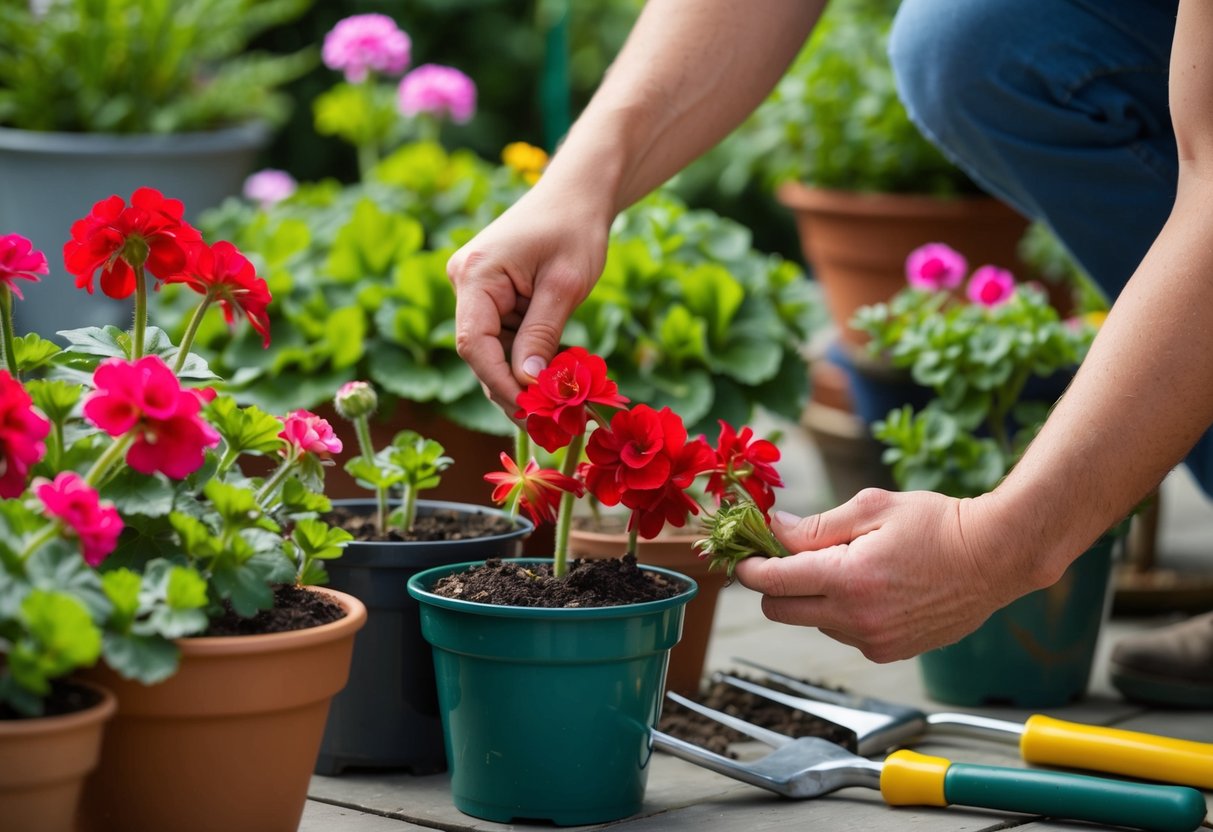
Geraniums are beautiful plants, but they need some attention after deadheading. To keep them healthy and vibrant, make sure you provide proper care.
Keep an eye out for any faded blooms or damaged leaves. Regularly inspect your geraniums and remove these to help the plant focus its energy on new growth.
Watering is important. After deadheading, give your geraniums a good soak. Make sure the soil drains well to prevent root rot. It’s a good idea to water when the top inch of soil is dry.
Pruning is important beyond just deadheading. Trim any straggly or excessive growth to maintain a pleasing aesthetic. Cut back to a leaf node to encourage bushier growth.
If you live in colder hardiness zones, consider how you will overwinter your geraniums. You might need to bring them indoors or provide some cover to protect them from frost.
Gardening tips: Use a balanced fertilizer every few weeks during the growing season. This keeps your geraniums blooming with healthy and vivid colors.
Remember, your geraniums also benefit from some sunlight. They like bright, indirect light. Try placing them where they’ll get at least a few hours of sun each day.







